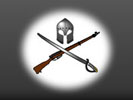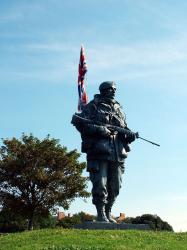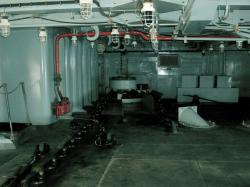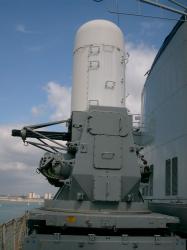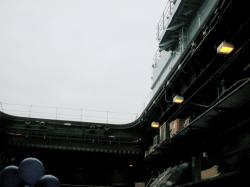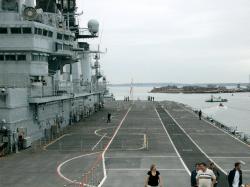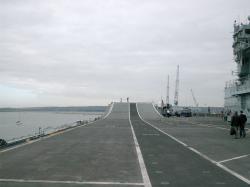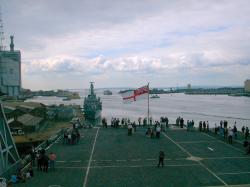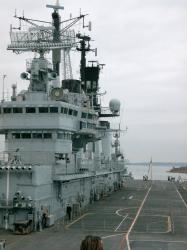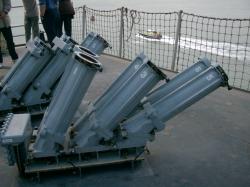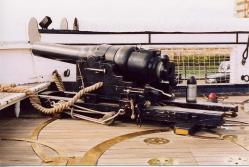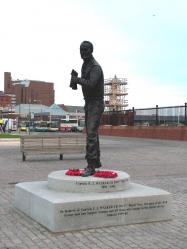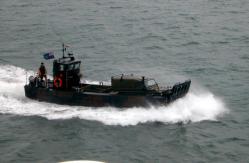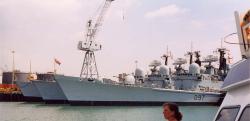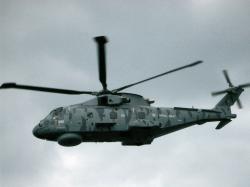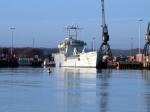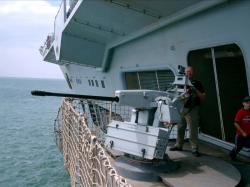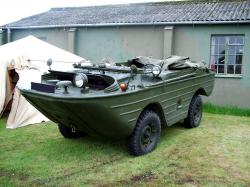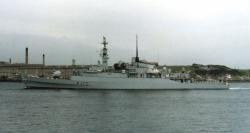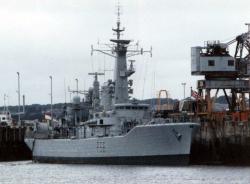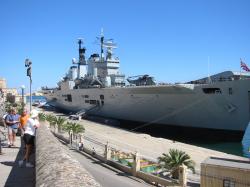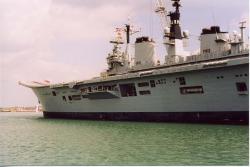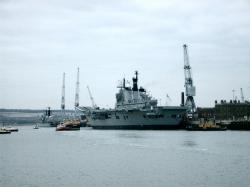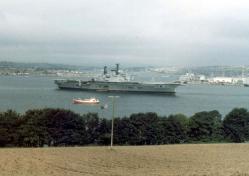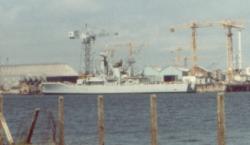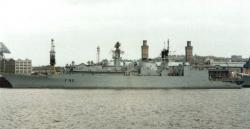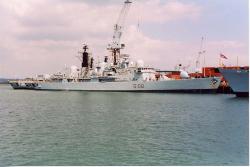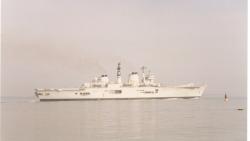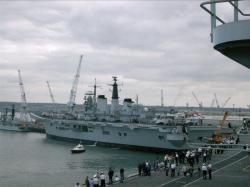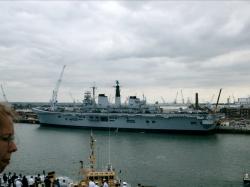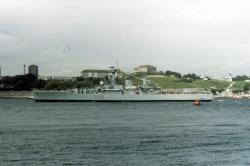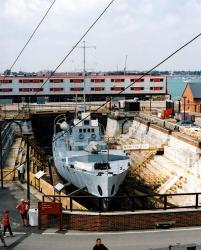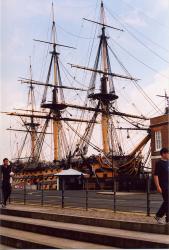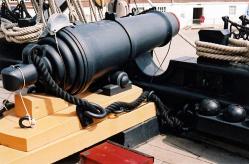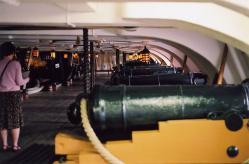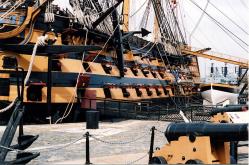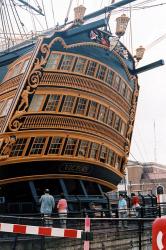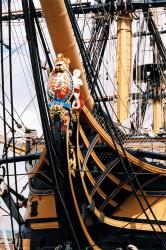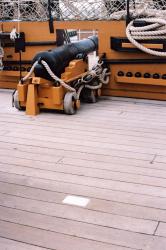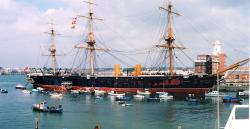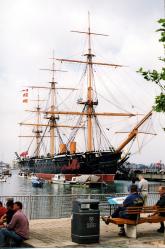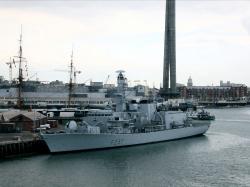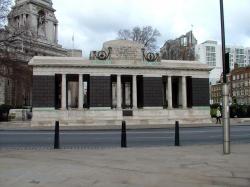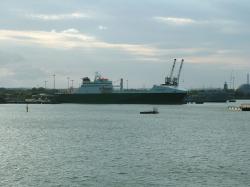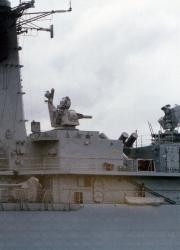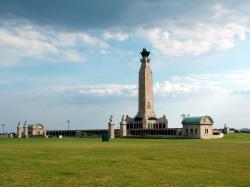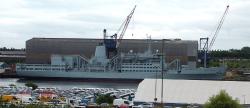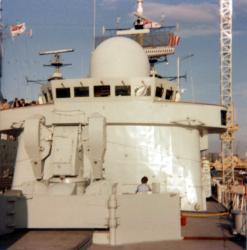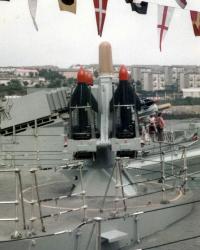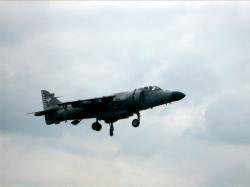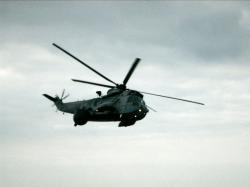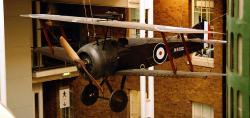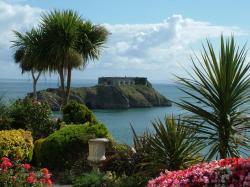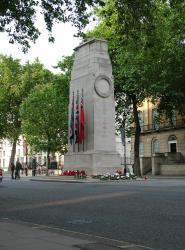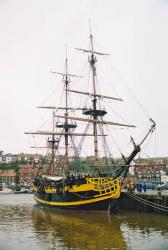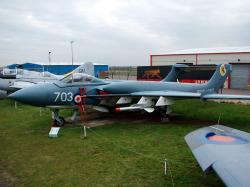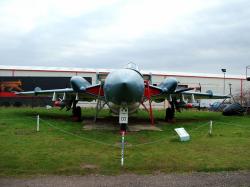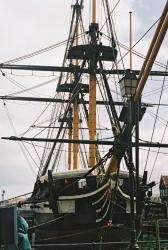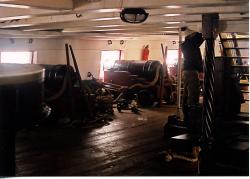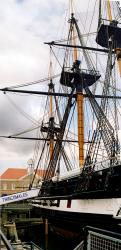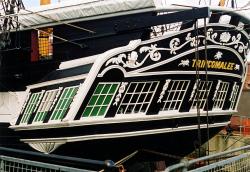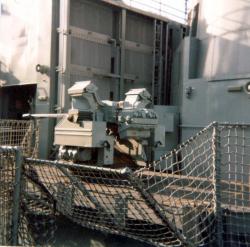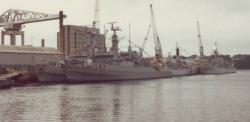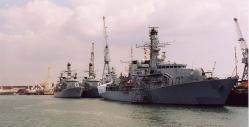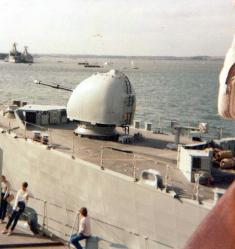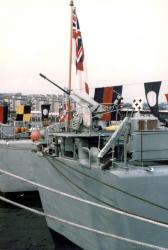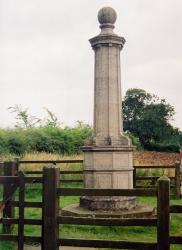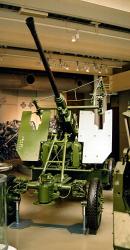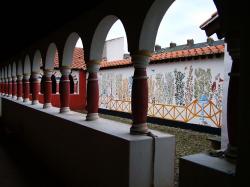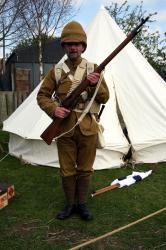Translate this Page
Recent images :
- International Harvester M5 halftrack
- Dassault Mystère Mk IVa number 146
- Ark Royal, Anti-ship missile defence gun.
- RAF Series 2 Land Rover
- Lightweight, air portable Land Rover
- Daimler Ferret Mk 1/2 Armoured Car
- RAF Mountain Rescue Series 3 Land Rover
- French Bronze 6 pounder cannon
- Farsley South African War Memorial
- Farsley War memorial
Naval (and amphibious military) Images
Click on the entry for a larger image and details, or click to go back to the previous index
The statue outside the former Royal Marines Eastney barracks near Portsmouth dedicated to those who fought in the Falklands War 1982. It is based on an iconic photograph of a Marine 'yomping' or travelling cross-country from the landing point in San ...
Royal Marines Museum, Eastney, Southsea nr Portsmouth, England. 2007
The cable locker, and anchor chains on board the Ark Royal
Portsmouth Naval Dockyard, July 2003
The Raytheon Systems, Phalanx Close In Weapons System was first developed in 1977, and began to be deployed in the US Navy from 1980. It fires 20mm shells and can be operated fully automatically using both radar and Forward-looking Infra-Red (FLIR) t...
Portsmouth Naval Dockyard, July 2003
A view from below decks, looking up through one of the aircraft lifts
Portsmouth Naval Dockyard, July 2003
Taken from the 'ski-jump' the view of the flight-deck and stern gives some impression of the ship's size.
Portsmouth Naval Dockyard, July 2003
This view of Ark Royal's flight deck clearly shows the take-off route for the ship's complement of Sea Harrier FA.2 aircraft. The 'ski-jump' at the end provides a boost of much-needed lift at the last moment.
Portsmouth Naval Dockyard, July 2003
The stern and white ensign of the Ark Royal, with the older Type 23 'Duke' class frigate, HMS Westminster moored astern, and the harbour entrance in the background.
Portsmouth Naval Dockyard, July 2003
The superstructure, bridge and masts of the Ark Royal.
Portsmouth Naval Dockyard, July 2003
One of the chaff dispensers on board the Ark Royal, designed to eject huge quantities of aluminium foil in a cloud to confuse a radar-guided missile attack.
Portsmouth Naval Dockyard, July 2003
The bow 110lb, breech-loading Armstrong gun on board HMS Warrior.
Portsmouth harbour, August 2002.
A collection of Naval Memorials positioned on the banks of the River Mersey at Georges Dock Pierhead in Liverpool. They commemorate the vital part the city and it's shipping played in the survival of the British during the Second World War.
The firs...
Georges Dock, Liverpool. Feb 2005
This LCVP (Landing Craft Vehicle Personnel), from 17 Royal Logistics Corps Port and Maritime Regiment can transport a platoon of Soldiers or, as in this case, a Landrover and trailer and deliver them to a landing beach via the bow ramp.
Portsmouth Naval Dockyard, July 2003
British Type 42 destroyers, HMS Edinburgh (foreground), York & Manchester.
Portsmouth harbour, August 2002.
An Augusta Westland EH101, in service with the Royal Naval Air Service as a Merlin HM.1 No. R269. It's primary roles are anti-submarine and Anti-surface warfare, but can also be used in the Airborne early warning, Search and Rescue, Medevac and trans...
Portsmouth Naval Dockyard, July 2003
Round Table class Landing Ship Logistics and Falklands War veterans. In June 1982, the Sir Tristram and Sir Galahad were damaged off Fitzroy, with the loss of 48 Welsh Guards and crew on Galahad. Sir Tristram was towed back to the UK and refitted, Si...
Southampton Water, England. 2006
Based on the Oerlikon 20mm cannon, the GAM BO1 is fitted to most ships of the Royal Navy for smaller-caliber gunnery duties. It has a range of 2km and a rate of fire up to 900 rounds per minute.
Portsmouth Naval Dockyard, July 2003
The GAZ 46 was inspired by US amphibious vehicles supplied to Russia during the War, but entered service in the 1950's an has been used by many easter-bloc allied forces since. It could carry up to 5 people, and due to it's steeply raked front and re...
The Wheels and Wings 2006 event, Yorkshire Air Museum, York, UK. May 2006.
An Amazon Class [Type 21] Frigate sunk in the Falklands Campaign. Built. 1975 by Vosper Thornycroft to a commercial design and subsequently bought by the Royal Navy. Displacement. 3250 tons Dimensions. 117m x 13m x 6m. Speed. 34 knots Complement. 1...
Photographed Plymouth 1980.
A Leander class [Exocet conversion] Frigate Built 1967 by Hawthorn Leslie. Displacement 2,860tons Dimensions 113m x 12m x 5m. Speed 27 knots. Complement 230.
Armament 4 Exocet missiles, 3 Sea Cat Missile systems, 2 x 40 mm guns, 6 torpedo tubes, 1 ...
location and date unknown
The carrier Ark Royal during a visit to Malta (courtesy of J. Williamson)
Valeta harbour, Malta. October 2002.
Several views of the Carrier HMS Ark Royal, moored in Portsmouth harbour, photographed from the regular fleet boat tours run from the Historic Docks.
Portsmouth harbour, August 2002.
Ark Royal, moored alongside the Portsmouth dockyard.
Portsmouth Naval Dockyard, July 2003
One of Great Britain's last big carriers, the previous Ark Royal was laid down in May 1943, launched May 1950 but was not completed until 1956 to revised/modernised plans. Displacement 45,000 tons, Dimensions 804 feet x 135 feet x 33 feet, Speed 31 k...
Photographed Plymouth 1980.
Leander Class Frigate H.M.S. Bacchante, built in 1969 by Vickers. Disposed of 1983. Armament : Twin 4.5"" guns, 2 x 20 mm, 1 Sea cat missle system, 1 Mark 10 mortar. This vessel was disposed of by the Royal Navay and shortly thereafter commissioned i...
Not known
Type 22 Frigate [Batch 2]. Built 1985 by Yarrow. Displacement 4100tons Dimensions 143m x 15m x 6m. Speed 30 knots. Complement 290.
Armament 4 Exocet missiles, 2 Sea Wolf Missile systems, 2 x 40 mm and 2 x 20mm guns, 6 torpedo tubes, 2 Lynx helicopt...
Location unknown, 1980's
D88, HMS Glasgow (type 42 destroyer) with Victory in the background.
Portsmouth harbour, August 2002.
The carrier Illustrious returning from Middle East deployment
the Solent. 25th March 2002.
HMS Invincible moored alongside the Portsmouth quayside. The first of the Invincible class light carriers, she saw service as the flagship in the Falklands war 1982.
Portsmouth Naval Dockyard, July 2003
HMS Invincible moored alongside the Portsmouth quayside. The first of the Invincible class light carriers, she saw service as the flagship in the Falklands war 1982.
Portsmouth Naval Dockyard, July 2003
Name ship of the Leander class of Frigates. Converted to carry Ikara Anti-Submarine Missile System [1973-76] Built 1963 by Harland and Wolf. Displacement 2,860tons Dimensions 113m x 12m x 5m. Speed 29 knots. Complement 240.
Armament Ikara Anti-Su...
Photographed Plymouth 1980.
An example of a World War 1 single gunned gunboat in dry dock.
Portsmouth Historic Dockyard, August 2002
The latest British assault carrier HMS Ocean (L12) in dock
Portsmouth harbour, August 2002.
HMS Victory, laid down on 23rd July 1759, is the oldest Commissioned warship in the world and remains the flagship of the 2nd Sea Lord although it no longer floats. It began service with the Royal Navy in 1765 and was the flagship of many famous Admi...
Portsmouth Historic Dockyard, August 2002
A close-up of one of the Victory's 68-pounder carronade guns (reproduction) mounted on the forecastle. The shot garland with 2 68 pound round shot can be seen to the right.
Portsmouth Historic Dockyard, August 2002
A view of the middle gundeck of the Victory, showing the cramped conditions in which the crew would have had to fight the huge 24-pounder cannon currently run out.
Portsmouth Historic Dockyard, August 2002
Victory's port side showing the broadside, and the steep curves of her tumblehome.
Portsmouth Historic Dockyard, August 2002
A good view of her stern gallery, showing the beautifully ornate woodwork with which she was decorated, but also giving some idea of her size
Portsmouth Historic Dockyard, August 2002
Detail of the Victory's prow showing the crest figurehead.
Portsmouth Historic Dockyard, August 2002
A section of the Quarterdeck showing, in the foreground (and in the detail picture), a brass plaque marking the point where admiral Nelson fell during the Battle of Trafalgar to musket fire from the Redoutable. He died later, on the orlop deck with t...
Portsmouth Historic Dockyard, August 2002
HMS Warrior, the largest, fastest, most powerful warship afloat when she was built in 1860.
Portsmouth Historic Dockyard, August 2002
HMS Warrior, the largest, fastest, most powerful warship afloat when she was built in 1860.
Portsmouth Historic Dockyard, August 2002
The Type 23 Frigate Westminster, moored in Portsmouth during an Assisted Maintenance Period. Her 4.5 inch Mk 8 gun with 2 quad Harpoon missile launchers just aft can clearly be seen.
Portsmouth Naval Dockyard, July 2003
The monument on Tower Hill in London to the Merchant sailors from both World Wars who have no known grave.
London, England. June, 2005
This merchant vessel is one of six strategic sealift Ro-Ro ships contracted by the Ministry of Defence for use by the Royal Navy when required. She is un-armed, displaces 20,000 tons and can make 18 knots.
Marchwood Naval station, Southampton Water, England. August 2004
This Dutch-built Close in Weapons System (CIWS) provides a fully autonomous weapon designed to shoot down missiles and aircraft from between 350m and 1500m of the host ship. It mounts a 7 barrel 30mm Gatling gun capable of 4,200 rounds per minute and...
Location and date unknown, probably early 1990's
The monument to personnel of the Royal Navy from both world wars who have no known Grave. The Inscription across the base of the Obelisk reads :
1914 - 1918 1939 - 1945
ALL THESE WERE HONOURED IN THEIR GENERATIONS
AND WERE THE GLO...
Southsea Common, Portsmouth, England. August 2007
The Fort Austin, Fleet Stores Vessel served in the Falklands War of 1982 and continues in service with the Royal Fleet Auxiliary.
She displaces 23,384 tons, can make 20 knots and has a complement of 201 crew including 45 Fleet Air Arm as she can pr...
Wallsend, Tyne and Wear, England. June 2004
Two views of the Sea Dart medium range area defence anti-aircraft missile system in it's dormant, unloaded state. The two outer mounting points take missiles which slide up from the magazine below the mounting which then elevate and rotate to track t...
location and date unknown
A close range anti-aircraft missile used by the British Royal Navy. Its guidance was by radio-controlled visual tracking and its propulsion was by solid fuel. It was fitted to Rothesay Class, Leander Class and Amazon Class Frigates, also in County cl...
Location unknown, 1980's
The only fixed-wing, carrier-borne aircraft left in service with the Royal Navy. The Sea Harrier, built by BAe Systems provides fleet defence and strike capabilities.
Portsmouth Naval Dockyard, July 2003
After the Falklands War it became clear that the Royal Navy lacked and Airborne Early Warning radar capability. This version of the trusty Sea King helicopter is the result, note the radar dome slung amidships, which pivots rearward for landing.
Portsmouth Naval Dockyard, July 2003
The Sopwith Camel (so called because of the hump in the forward fuselage between the pilot and the propeller) arrived late in the First World War, entering service on the western front on 4th July 1917, to late to prevent the 'happy time' in April th...
Imperial War Museum, London, England. October 2003.
One of the defences built in the 1860's to protect the Welsh Pembrokshire coast from the threat of French invasion. It is built on a rocky outcrop to the east of the small town of Tenby. It has gun embrasures down both the northern and southern sides...
Tenby, Pembrokeshire, Wales. August 2004
The symbolic 'empty tomb' in Whitehall, London which is the focus of Remembrance Day commemorations in the UK. It was designed in 1919 by Sir Edwin Lutyens in Portland Stone, and is surrounded by the flags of the Navy, Army, Air Force and Merchant Na...
Whitehall, London. June 2005
The Grand Turk - a reproduction of a late 18th century sloop-of-war used in the 'Hornblower' Television series.
Whitby harbour, Autumn 2001.
Midlands Aircraft Museum, Coventry Airport, Baginton,England. March '07 & March '08
Midlands Aircraft Museum, Coventry Airport, Baginton,England. March '07 & March '08
The Trincomalee - a 40 gun frigate of 1817 build in Bombay for the Royal Navy - during restoration
Hartlepool Historic Quay, Autumn 2001
Taken during renovation and fitting as a modern attraction (hence the fire extinguisher - not an original feature!) this picture shows the height and cramped nature of the gundeck. Also the 24 pounder gums with which it was armed can be seen, run out...
Hartlepool Historic Quay, Autumn 2001
A view down the port side of the Trincomalee from the stern. The guns, run-out can be seen, along with the hammock-netting, standing rigging, running rigging and yards for the courses only (topsail yards etc. not yet swayed up) and the fighting tops.
Hartlepool Historic Quay, Autumn 2001
The stern gallery of this heavy frigate showing the beautiful lines and carved woodwork of a frigate of this period.
Hartlepool Historic Quay, Autumn 2001
Two views of the Royal Navy's twin 30mm GCM - A03 mounted Oerlikon guns as fitted to Type 22 frigates and other ships such as LPD's. Each gin has a rate of fire of 650 rpm and a range of 3000m .
Location and date unknown, probably early 1990's
A veteran of the Falklands War, she was commissioned in 1977 and was sold to Pakistan in 1994.
Not known
2 Type 21's shortly after their return from the Falklands War. Note the pennant numbers still painted out
Plymouth Harbour, 1982.
British type 23 'Duke' class frigates Westminster (foreground) with Richmond and Iron Duke astern.
Portsmouth harbour, August 2002.
The ‘standard’ 4.5 inch/114mm gun fitted in Type 42 Destroyers, Batch 3 of Type 22 Frigates and all Type 23 Frigates. Capable of firing a range of ammunition at up to 25 rounds per minute out to a maximum range of 17 miles.
location unknown
The actual ship concerned is not known, but our best guess is that this is the stern of a Leander class Frigate photographed in 1984 [or 1983] a single barrel 20mm being part of the post Falklands additional armament.
Location unknown, 1980's
